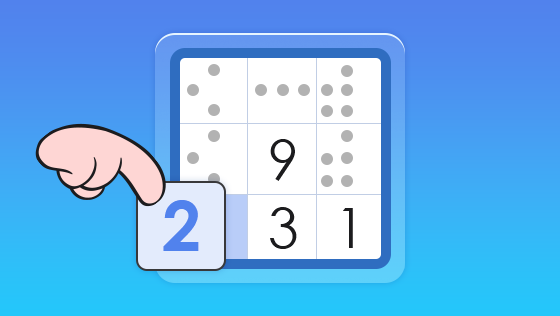Become a Speed Solver
Speed solving isn't just about thinking faster - it's about thinking smarter. Professional speed solvers use specific techniques and strategies to minimize time while maintaining accuracy.
1. Scanning Techniques
Cross-hatching: Quickly scan rows and columns to identify where numbers must go in each box. Start with numbers that appear most frequently in the grid.
Counting: For each box, quickly count which numbers are missing and look for singles.
2. Number Order Strategy
Instead of jumping randomly between numbers, work systematically:
- Start with the most frequent numbers (usually 5-7 instances)
- Complete one number across the entire grid before moving to the next
- This reduces mental switching and increases pattern recognition
3. Visual Pattern Recognition
Train your eyes to instantly recognize common patterns:
- Naked singles (cells with only one possibility)
- Hidden singles (numbers that can only go in one place in a unit)
- Locked candidates (numbers restricted to one row/column in a box)
4. Pencil Mark Optimization
For speed solving, minimize pencil marks:
- Only mark cells with 2-3 candidates
- Use mental notes for obvious eliminations
- Update marks immediately when placing numbers
5. Time-Saving Shortcuts
- Snyder Notation: Only mark candidates 1-2 in cells, speeds up easy-medium puzzles
- Box/Line Reduction: Quickly spot when a number in a box is restricted to one row/column
- Pointing Pairs: Identify when candidates in a box eliminate options in rows/columns
6. Practice Routine
Improve your speed with structured practice:
- Solve 3-5 easy puzzles daily for pattern recognition
- Time yourself and track progress
- Review mistakes to identify weak spots
- Gradually increase difficulty while maintaining speed
Speed Solving Benchmarks
- Beginner: 10-15 minutes for easy puzzles
- Intermediate: 5-8 minutes for easy, 10-15 for medium
- Advanced: 2-4 minutes for easy, 5-8 for medium
- Expert: Under 2 minutes for easy, 3-5 for medium
